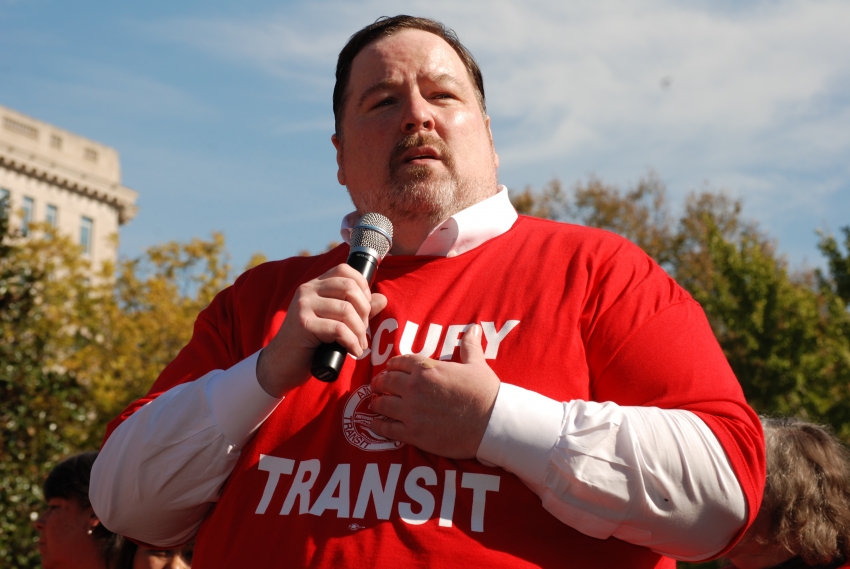

Share
On May 7, while recovering from an illness, Amalgamated Transit Union (ATU) International President Larry Hanley died suddenly. In a brief statement, his family, quoting Mary G. Harris “Mother” Jones, urged us to: “Pray for the dead and fight like hell for the living.”
Larry was an amazing friend, brother, comrade and union builder. He was modest, especially for an international union president. But what made Larry unique was his commitment to grassroots coalition building. He organized rider coalitions, bargained for the public good, initiated progressive ballot measures and embedded the issue of climate change in the politics of the ATU. More than anything else he defined union political action as transformational and not just transactional.
Larry was elected president of his union nine years ago as an insurgent demanding institutional change. For many of us elected to union or public office, the focus is on our own career or journey. Never for Larry!
Yes, he was honored to lead his union—his life’s work for 40 years, during which he went from Staten Island bus driver to local president to staff representative and then International President. But I never saw Larry limit his imagination and vision for ATU to the immediate gain at the expense of real long-term change. He is a model for all of us to aim higher, with our actions and not just our words.
Larry was deeply proud of the coalitions with public transit riders that his union pioneered, starting in Chicago. I recall him describing that work at an AFL-CIO Executive Council meeting a few years before the Chicago Teachers Union popularizedbargaining for the public good. Larry understood that if transit workers united with the riders, they could not be stopped. This meant fighting to expand the benefits of mass transit and keep fares low, as much as it meant higher pay or benefits.
Larry understood that the very existence of mass transit depended on those riders who most depended on it, most often Black, Latino and immigrant workers. Larry acted and preached to ATU members that mobilizing the support of riders and the community were key to the union’s future success—not just traditional political action. In other words, the union was bargaining not just for its members but for the collective good. This is a vision for organizing based on opening the contract process up to riders and the community writ large, so they too can participate in collective bargaining, as the riders might have demands that the union failed to see.
Across the nation, ATU initiated ballot measures as a strategy to offset the power of transit and political management and their efforts to privatize and cut services. While ballot measures like those to increase the minimum wage are supported by many unions, Larry was willing to work to pass ballot measures that included higher taxes to fund mass transit growth, going against conventional wisdom that voters would not vote to pay for transit growth.
More than any other union president, Larry understood that climate change is a threat to our very existence. Investing in mass transit as opposed to expanding carbon-intensive transport fundamentally benefits ATU members and their jobs. But Larry spearheaded the creation of an ATU committee on climate and was willing to push back against anyone who denied the disastrous impact of fossil fuel expansion, while fighting just as hard to expand unemployment benefits and to provide a path to good paying jobs for those displaced in the transition to renewable energy and a sustainable economy.
“Carry it on” is a slogan often employed at moments like this. We mouth the words, but soon the pain of a dear one’s death passes and we return to normalcy. For me, radical acceptance of the death of a comrade has meant changing something that I do, as small or as hard as that may be. In Larry’s case, his memory and spirit provide many options—I will try to smile as I choose one in his memory and his name.
Larry Cohen is the Board Chair of Our Revolution and past president of Communications Workers of America.
This article first appeared in In These Times

